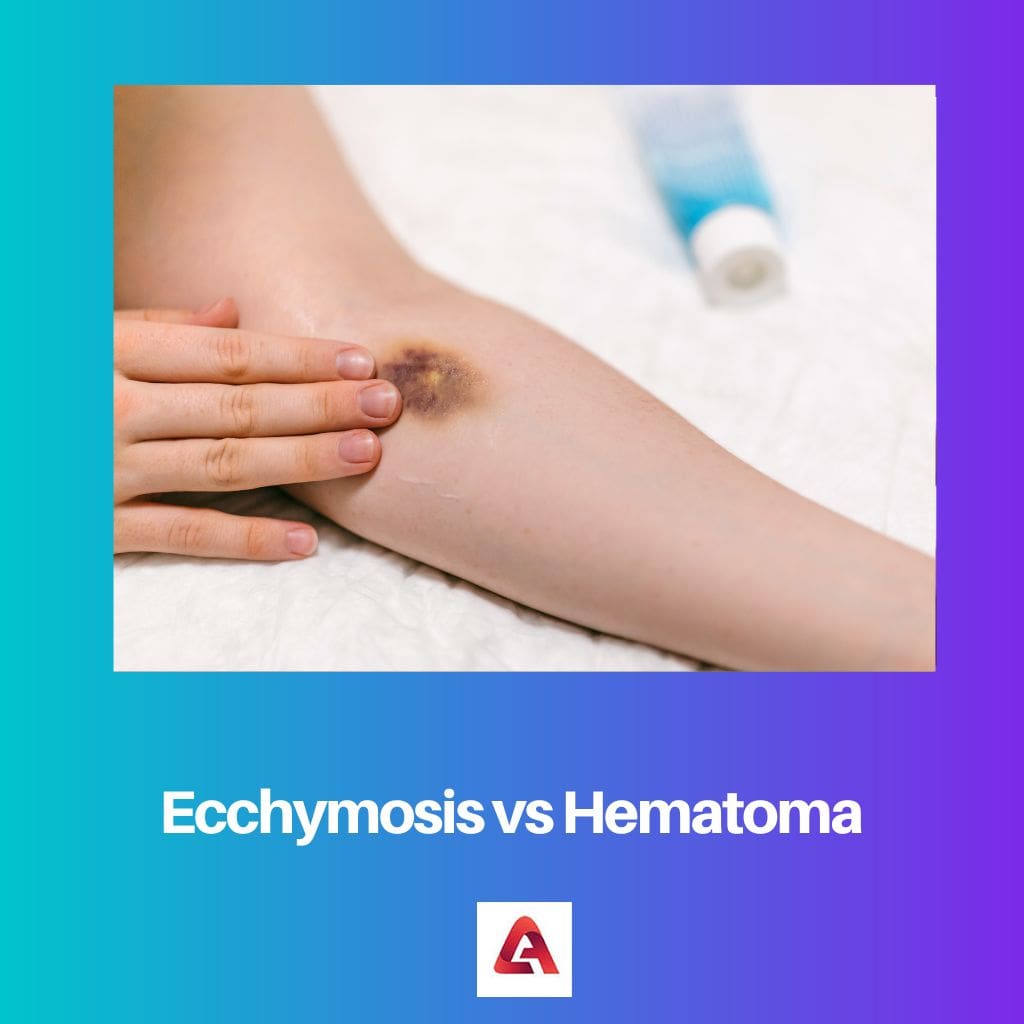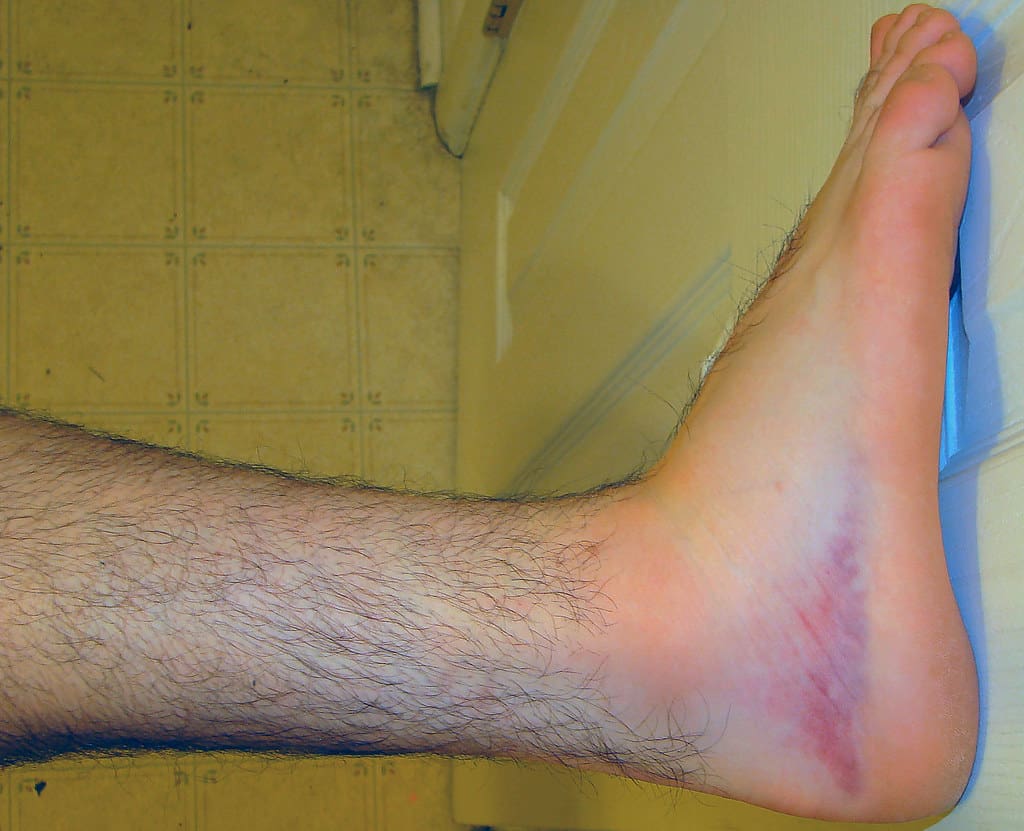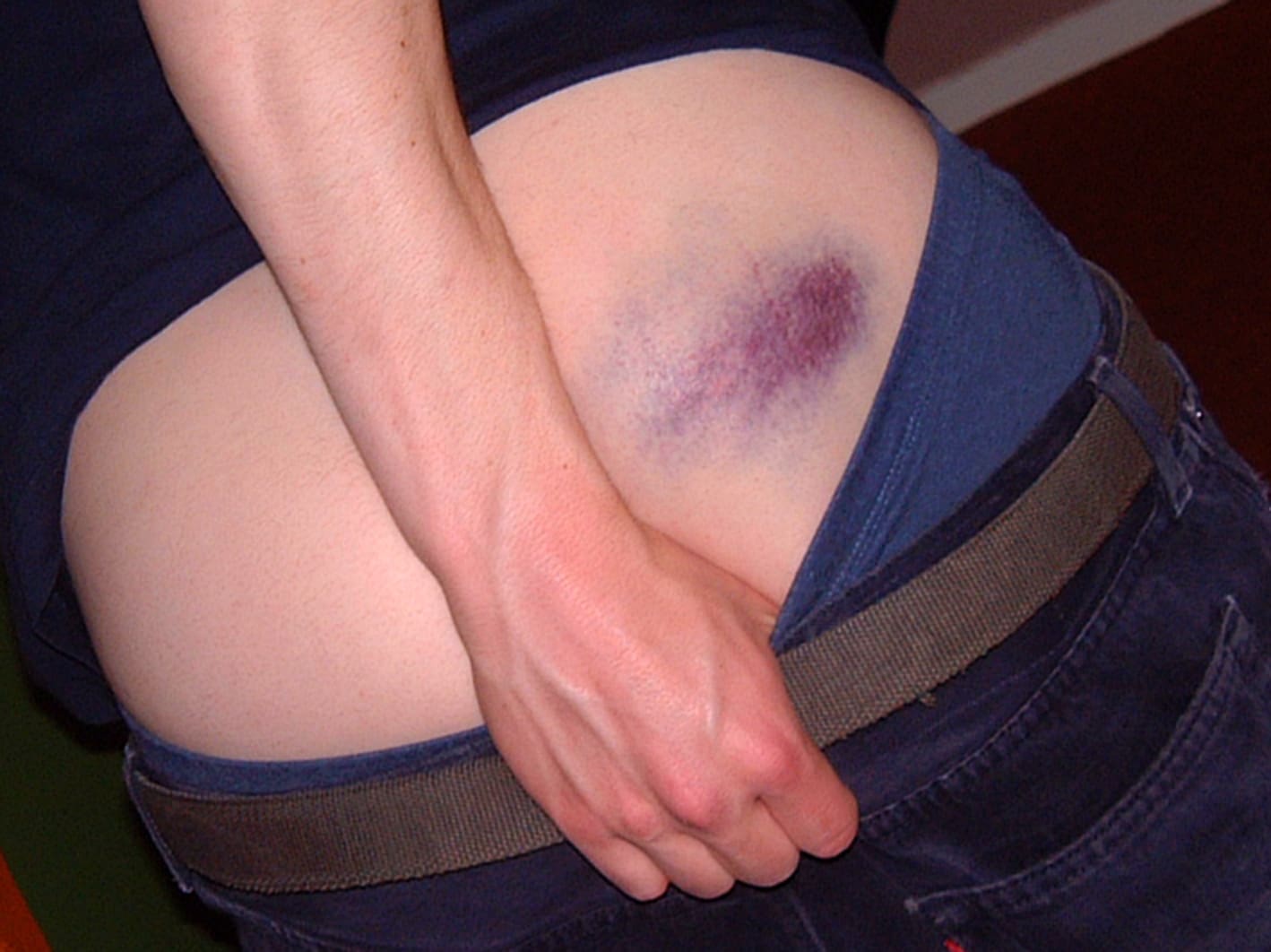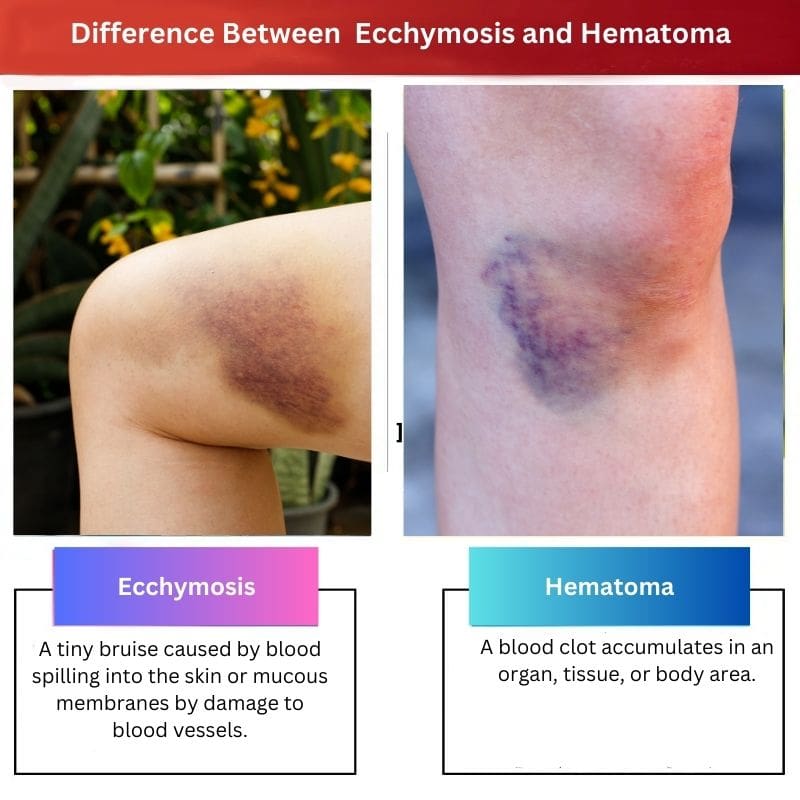Key Takeaways
- Ecchymosis is a flat discoloration of the skin due to blood leakage, whereas hematoma is a localized swelling filled with blood, creating a raised area.
- Ecchymoses result from minor trauma or spontaneous bleeding, while hematomas occur due to more significant trauma or injury.
- Ecchymoses heal without intervention, while hematomas may require medical attention, such as drainage or surgery, depending on their size and location.

What is Ecchymosis?
Blood seeping from blood arteries into the tissue beneath the skin, or subcutaneous tissue, causes ecchymosis. The most frequent reason is trauma, which can happen anywhere in the body (for example, a harsh impact on the skin that causes capillaries to burst). Eye ecchymosis, called periorbital or raccoon eyes, is a sign of a concussion or traumatic injury that fractures the skull.
Ecchymosis is bluish-purple discoloration that only affects the top layer of skin and has a recognizable flat appearance. The individual may feel slight discomfort, inflammation, and subsequent swelling surrounding the lesion, normally one centimeter or more. Due to the metabolic breakdown of hemoglobin, the appearance of the ecchymosis will change as it heals, going from dark purple and blue to yellow or green.
Ecchymoses can be treated on their own. If the ecchymosis is in a mobile location, such as the lower extremities, resting the area can aid in recovery and swelling reduction.

What is Hematoma?
A hematoma is a collection of blood, clotted, outside a blood vessel that could develop due to damage in the walls of the blood vessel that allows blood to escape into tissues it shouldn’t. Hematoma may either affect the artery, capillaries, or vein. The bleeding may be minor and result in only a tiny amount of blood loss, or it may be massive and cause substantial blood loss.
Trauma frequently results in hematomas from a vehicle accident, a little bump, a cough, or an unidentified occurrence. Blood doesn’t get clot or coagulate in blood vessels since blood constantly flows via them. There is virtually rapid clotting when blood leaves the circulatory system and becomes steady. The size of the hematoma increases with the amount of bleeding that takes place.
Most problems have no lasting effects and don’t call for analysis. However, after any trauma, a person experiences symptoms like confusion, a severe headache, mismatched pupils, or other neurological indicators, they should immediately consult a doctor.

Difference Between Ecchymosis and Hematoma
- Ecchymosis is considered a flat, non-traumatic skin darkening. However, hematoma symptoms primarily rely on the size and location of the hematoma.
- Ecchymosis is a bluish patch on the skin caused by blood seeping from blood vessels in an area measuring 1 cm or larger, whereas blood that has flowed out of vessels gathered and clotted in the body where it shouldn’t be, is called a hematoma.
- Ecchymosis can go away with painkillers and an ice pack. On the other hand, Hematomas can be cured with ice packs or brain surgery; the precise procedure depends on where the hematoma is present.
- Ecchymosis can develop due to anticoagulant use or a certain kind of severe damage. Hematoma can result from broken bones or neurological damage.
- Ecchymoses are plain and flat, but hematomas are swellings with a more three-dimensional structure.
Comparison Between Ecchymosis and Hematoma
| Parameter of comparison | Ecchymosis | Hematoma |
|---|---|---|
| Definition | A tiny bruise caused by blood spilling into the skin or mucous membranes by damage to blood vessels. | A blood clot accumulates in an organ, tissue, or body area. |
| Causes | It is caused by using anticoagulants or experiencing a traumatic injury. | It is caused by fractured bones or brain damage. |
| Symptoms | Huge, flat, painful region of purple color. | A sore spot that appears like a bruise but is inflamed and uncomfortable. |
| Treatment | Painkillers and cold packs. | It can go away from Cold compress or brain surgery. |
| Identification | Plain and flat bluish patch. | Swellings of three-dimensional structure. |

